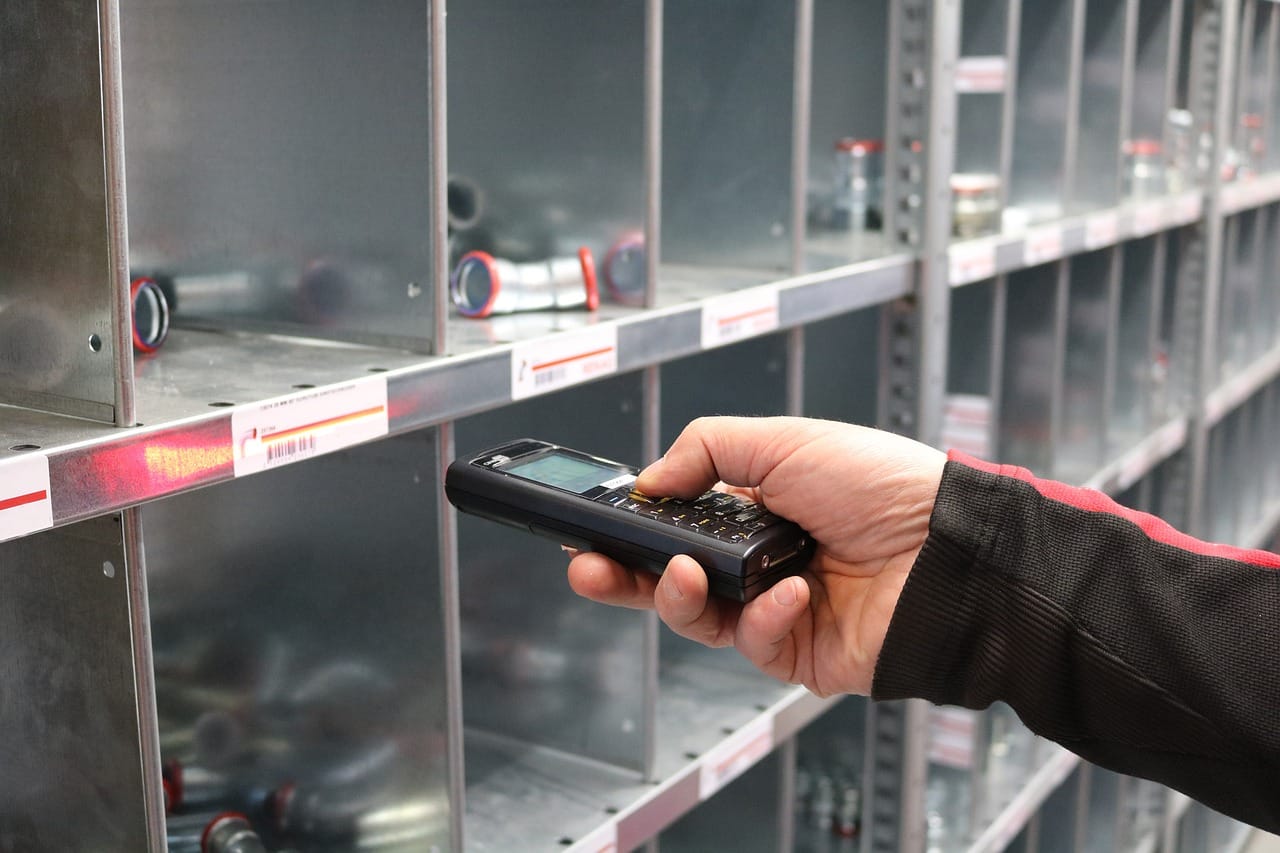Smart Inventory Moves | Navigating Economic Downturns in Retail with Innovative Strategies
Navigate economic downturns in retail with smart inventory moves. Learn innovative strategies, technology adoption, and sustainable practices for resilience and competitiveness

Understanding Inventory Management in the Retail Industry
As a retailer, understanding the intricate process of inventory management is crucial for navigating economic downturns. Inventory management involves overseeing the flow of goods from manufacturers to warehouses and ultimately to the shelves of retail stores. It encompasses everything from stock control and tracking to forecasting demand and optimizing storage space. Effective inventory management is essential for meeting customer demands, minimizing costs, and maximizing profits. In times of economic uncertainty, having a solid grasp of inventory management becomes even more critical as retailers strive to maintain a healthy balance between supply and demand.
To excel in inventory management, retailers need to employ robust systems and processes that enable them to monitor stock levels, track sales trends, and anticipate customer preferences. By leveraging technology, retailers can implement automated inventory control systems that provide real-time data on stock levels, allowing for quick and informed decision-making. Additionally, understanding the unique characteristics of different products, such as shelf life and seasonal demand, is essential for optimizing inventory management in the retail industry.

In the retail landscape, staying attuned to market trends, consumer behavior, and economic indicators is imperative for effective inventory management. By keeping a finger on the pulse of the market, retailers can proactively adjust their inventory strategies to align with shifting consumer preferences and economic fluctuations. Moreover, fostering strong relationships with suppliers and distributors can help retailers gain valuable insights into market dynamics, enabling them to make informed decisions regarding inventory levels and product assortment.
Impact of Economic Downturns on Inventory and Supply Chain
Economic downturns exert profound impacts on inventory and supply chains within the retail industry. During periods of economic uncertainty, consumer spending tends to decrease, leading to shifts in demand for certain products and changes in purchasing behavior. As a result, retailers are faced with the challenge of managing their inventory in the face of fluctuating demand and market volatility. Economic downturns can also disrupt supply chains, causing delays in the delivery of goods and raw materials, which further complicates inventory management for retailers.
The effects of economic downturns on inventory and supply chains extend beyond the immediate implications of demand and supply. Financial constraints and credit limitations during economic downturns can hinder the ability of retailers to procure and maintain adequate inventory levels. This can lead to inventory shortages or excess stock, both of which can have detrimental effects on a retailer's bottom line. Moreover, economic downturns may prompt retailers to reevaluate their pricing strategies and promotional activities, impacting inventory management decisions.
In response to economic downturns, retailers must adopt agile inventory management practices that enable them to adapt to changing market conditions. This may involve implementing flexible supply chain strategies, diversifying sourcing options, and optimizing inventory turnover to mitigate the impact of economic uncertainties. By closely monitoring inventory levels and aligning them with demand forecasts, retailers can navigate the challenges posed by economic downturns and ensure the efficient management of their supply chains.
Innovative Inventory Strategies for Retailers
Innovative inventory strategies empower retailers to proactively address the challenges posed by economic downturns and achieve operational resilience. Embracing just-in-time inventory management, where goods are received only as they are needed in the production process or for sale, can help retailers minimize holding costs and reduce the risk of excess inventory during economic downturns. This lean inventory approach enables retailers to respond swiftly to changes in demand and optimize their supply chains for greater efficiency.
Another innovative strategy for retailers is the implementation of demand-driven inventory replenishment systems. By leveraging advanced analytics and demand forecasting techniques, retailers can align their inventory levels with actual customer demand, thus minimizing the risk of overstocking or understocking. Additionally, adopting collaborative inventory management approaches, such as vendor-managed inventory and consignment inventory, can foster closer partnerships with suppliers and distributors, leading to enhanced supply chain visibility and responsiveness.
In the face of economic downturns, retailers can also explore the concept of shared inventory, where multiple retail locations within a network share stock to optimize inventory levels and enhance product availability. This collaborative approach to inventory management enables retailers to streamline their supply chains, reduce carrying costs, and improve customer satisfaction by ensuring that popular items are consistently available across multiple store locations. By embracing innovative inventory strategies, retailers can bolster their resilience and competitiveness in the midst of economic challenges.
Leveraging Technology for Efficient Inventory Management
Technology plays a pivotal role in enabling retailers to achieve efficient and effective inventory management, particularly during economic downturns. Implementing advanced inventory management systems and software solutions empowers retailers to automate routine tasks, streamline inventory tracking, and gain real-time visibility into stock levels and sales data. This, in turn, facilitates informed decision-making and agile responses to changes in demand patterns and market dynamics.
The adoption of RFID (Radio Frequency Identification) and barcode scanning technologies enables retailers to accurately track and manage their inventory, reducing errors and enhancing operational efficiency. These technologies provide real-time insights into stock movements, inventory accuracy, and product availability, thereby enabling retailers to optimize their inventory control processes and minimize stockouts or overstock situations. Additionally, cloud-based inventory management platforms offer scalability and accessibility, allowing retailers to manage their inventory across multiple locations and channels with ease.
In the era of e-commerce and omnichannel retailing, technology-enabled inventory management solutions are essential for synchronizing inventory levels across various sales channels, including physical stores, online platforms, and mobile applications. By leveraging integrated inventory management systems, retailers can ensure seamless order fulfillment, minimize order discrepancies, and provide a consistent customer experience across all touchpoints. Furthermore, data analytics and machine learning capabilities can be harnessed to derive actionable insights from sales data, customer behavior, and market trends, enabling retailers to optimize their inventory strategies and make data-driven decisions.
Sustainable Inventory Practices in Challenging Economic Times
Amid economic downturns, the adoption of sustainable inventory practices is a strategic imperative for retailers aiming to achieve long-term viability and environmental responsibility. Sustainable inventory management involves minimizing waste, reducing excess inventory, and optimizing resource utilization, all of which contribute to cost savings and environmental conservation. By embracing sustainable inventory practices, retailers can enhance their operational efficiency, minimize their ecological footprint, and foster a positive brand image.
One key aspect of sustainable inventory practices is the implementation of efficient inventory storage and warehouse management systems that maximize space utilization and energy efficiency. By optimizing storage layouts, implementing energy-efficient lighting and climate control systems, and utilizing sustainable packaging materials, retailers can reduce their environmental impact and operating costs while ensuring the integrity of their inventory. Additionally, adopting eco-friendly transportation and logistics practices contributes to reducing carbon emissions and promoting sustainability across the supply chain.
In challenging economic times, retailers can also explore the concept of circular economy principles in their inventory management processes. This involves prioritizing product refurbishment, remanufacturing, and recycling to extend the lifecycle of products and minimize waste generation. By embracing circular economy practices, retailers can contribute to the conservation of resources, reduction of landfill waste, and the promotion of a more sustainable and regenerative approach to inventory management.
Case Studies: Successful Inventory Management during Economic Downturns
Several retailers have demonstrated exemplary inventory management strategies that have enabled them to navigate economic downturns successfully. One such case is that of a global fashion retailer that leveraged data-driven demand forecasting and inventory optimization techniques to align its inventory levels with shifting consumer preferences during a recession. By closely monitoring sales trends and utilizing advanced analytics, the retailer was able to adjust its product assortment, minimize excess inventory, and capitalize on emerging fashion trends, thereby maintaining a competitive edge in a challenging economic environment.

Another notable case study is that of a leading electronics retailer that embraced agile inventory replenishment strategies and collaborative partnerships with suppliers to mitigate the impact of supply chain disruptions during an economic downturn. By leveraging vendor-managed inventory and implementing just-in-time inventory practices, the retailer optimized its inventory turnover, reduced carrying costs, and ensured a steady supply of in-demand electronic products despite market uncertainties. These proactive inventory management initiatives enabled the retailer to sustain its market position and customer satisfaction levels amidst economic challenges.
Furthermore, a prominent grocery chain implemented sustainable inventory practices by optimizing its storage facilities, reducing food waste, and implementing efficient perishable goods management during an economic downturn. By leveraging technology-enabled inventory control systems and fostering partnerships with local food suppliers, the grocery chain minimized inventory spoilage, maximized product freshness, and upheld its commitment to sustainability while navigating the complexities of a challenging economic landscape.
These case studies underscore the significance of innovative inventory management strategies, technology adoption, and sustainable practices in enabling retailers to thrive during economic downturns. By drawing inspiration from these successful examples, retailers can glean valuable insights and best practices for enhancing their inventory management capabilities and fortifying their resilience in the face of economic uncertainties.
Supply Chain Resilience and Adaptability in Retail
The resilience and adaptability of supply chains are pivotal for retailers seeking to weather economic downturns and maintain operational continuity. A robust and agile supply chain enables retailers to respond swiftly to market fluctuations, mitigate disruptions, and optimize inventory flows to meet customer demands. Building supply chain resilience involves diversifying sourcing strategies, establishing alternative distribution channels, and fostering collaborative relationships with suppliers and logistics partners.
During economic downturns, supply chain adaptability is essential for retailers to adjust their inventory strategies, address supply shortages, and manage the complexities of global sourcing and logistics. This may involve reevaluating sourcing regions, reconfiguring transportation routes, and implementing contingency plans to mitigate potential disruptions in the supply chain. By proactively assessing and addressing vulnerabilities in the supply chain, retailers can enhance their ability to navigate economic uncertainties and maintain seamless inventory operations.
Moreover, embracing digitalization and supply chain visibility technologies enhances the transparency and responsiveness of supply chains, enabling retailers to monitor inventory movements, track supplier performance, and anticipate potential bottlenecks or risks. Real-time visibility into the supply chain empowers retailers to make informed decisions, optimize inventory allocation, and proactively address challenges arising from economic downturns. By leveraging data analytics and supply chain optimization tools, retailers can enhance the resilience and adaptability of their supply chains, thereby mitigating the impacts of economic uncertainties on inventory management.
Inventory Optimization and Cost Reduction Measures
In times of economic downturns, inventory optimization and cost reduction become paramount for retailers striving to maintain profitability and operational efficiency. Optimizing inventory levels involves striking a balance between meeting customer demand and minimizing carrying costs, thereby maximizing inventory turnover and capital utilization. By leveraging demand forecasting, data analytics, and inventory modeling techniques, retailers can align their inventory levels with market demand, reduce stockouts, and optimize their supply chain operations.
Implementing cost reduction measures in inventory management entails streamlining procurement processes, negotiating favorable terms with suppliers, and minimizing inventory holding costs. By optimizing order quantities, lead times, and inventory turnover rates, retailers can reduce carrying costs and enhance their working capital efficiency. Additionally, adopting lean inventory principles and minimizing excess stock through efficient inventory control practices enables retailers to mitigate the financial impacts of economic downturns and maintain a lean and responsive inventory ecosystem.
Furthermore, exploring alternative inventory financing options, such as consignment inventory agreements and inventory financing programs, can provide retailers with additional flexibility and liquidity during economic downturns. By collaborating with financial partners and suppliers to optimize inventory financing arrangements, retailers can alleviate the financial strain associated with inventory management and ensure the availability of working capital for essential business operations. These cost reduction measures and inventory optimization initiatives empower retailers to navigate economic challenges while preserving their financial sustainability and competitiveness.
Collaborative Approaches in Inventory Management
Collaborative approaches in inventory management are instrumental for retailers looking to enhance supply chain efficiency, mitigate inventory risks, and foster mutually beneficial partnerships with suppliers and distributors. By engaging in collaborative inventory management practices, retailers can optimize inventory levels, reduce lead times, and improve inventory visibility throughout the supply chain. This collaborative framework enables retailers to align their inventory strategies with supplier capabilities, demand forecasts, and market dynamics, thereby enhancing the overall resilience and responsiveness of their inventory operations.
Vendor-managed inventory (VMI) is a prime example of a collaborative inventory management approach that empowers suppliers to assume responsibility for managing retailers' inventory levels based on predefined agreements and performance metrics. Through VMI, retailers and suppliers establish transparent communication channels and data-sharing protocols, enabling the efficient replenishment of inventory, reduction of stockouts, and optimization of inventory turnover. VMI fosters closer collaboration between retailers and suppliers, leading to improved supply chain efficiency and enhanced customer satisfaction.
Additionally, collaborative forecasting and planning initiatives enable retailers to leverage the expertise of their suppliers and distributors in developing accurate demand forecasts, aligning production schedules, and optimizing inventory stocking levels. By sharing sales data, market insights, and demand projections, retailers and their partners can collectively address inventory challenges, minimize the impact of economic downturns, and drive operational excellence across the supply chain. This collaborative exchange of information and resources facilitates proactive inventory management and enables retailers to adapt to changing market conditions with agility and foresight.
Navigating Economic Downturns with Smart Inventory Moves
In conclusion, the dynamics of economic downturns pose significant challenges for retailers in managing their inventory and supply chains. However, by embracing innovative inventory strategies, leveraging technology for efficient inventory management, adopting sustainable practices, and fostering collaborative approaches, retailers can navigate economic uncertainties with resilience and agility. The case studies of successful inventory management during economic downturns underscore the value of proactive inventory optimization, supply chain resilience, and cost reduction measures in sustaining operational continuity and driving competitive advantage.
As retailers confront the complexities of economic downturns, the imperative of smart inventory moves becomes increasingly evident. By aligning their inventory management strategies with market dynamics, customer demands, and supply chain resilience, retailers can effectively mitigate the impacts of economic uncertainties and position themselves for long-term success. Embracing technology-enabled inventory solutions, sustainable practices, and collaborative partnerships empowers retailers to fortify their inventory operations and enhance their ability to thrive amidst economic challenges.
As retailers navigate the ever-evolving landscape of the retail industry, the pursuit of smart inventory moves stands as a cornerstone of operational excellence and strategic resilience. By proactively adapting to economic downturns with innovative inventory strategies and collaborative supply chain approaches, retailers can steer their businesses towards sustainable growth and competitive advantage. In the face of economic uncertainties, smart inventory moves serve as a beacon of resilience and adaptability, enabling retailers to thrive in the midst of challenges and emerge stronger in the retail marketplace




